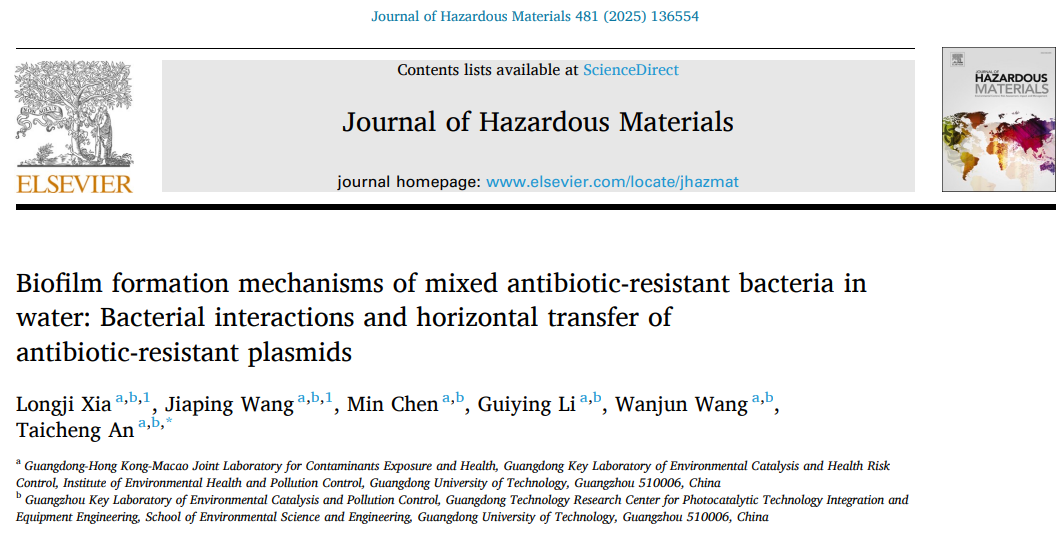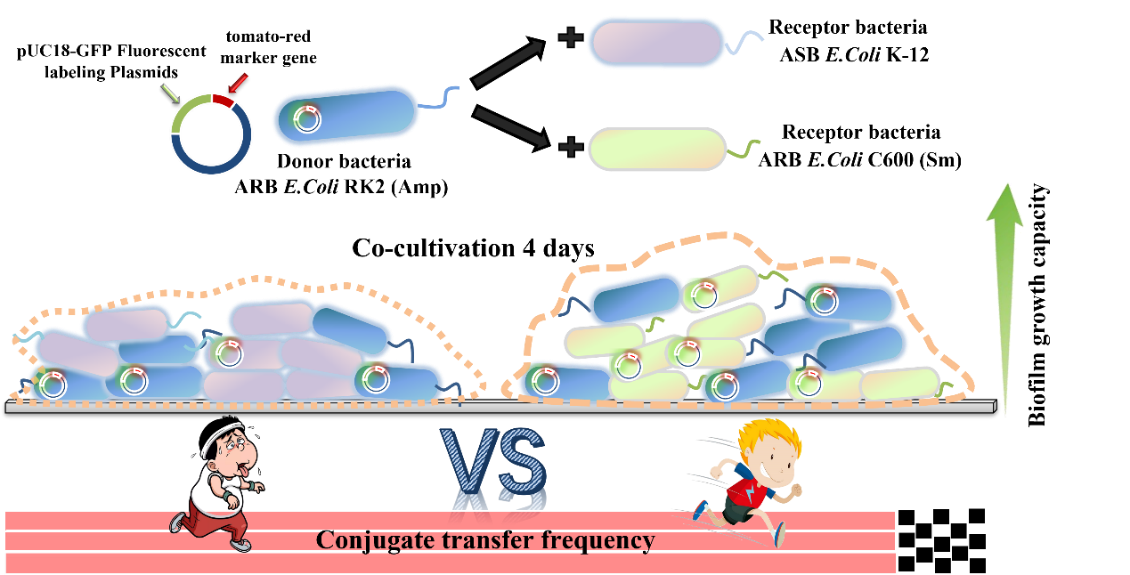《Biofilm formation mechanisms of mixed antibiotic-resistant bacteria in water: Bacterial interactions and horizontal transfer of antibiotic-resistant plasmids》

DOI: https://doi.org/10.1016/j.jhazmat.2024.136554
Graphical Abstract:

Abstract:
Over 95 % of bacteria on water supply pipeline surfaces exist in biofilms, which are hotspots for antibiotic resistance gene (ARG) transmission. This study established mixed biofilm culture systems on a metal iron substrate using Escherichia coli: antibiotic-sensitive bacteria (ASB) and antibiotic-resistant bacteria (ARB). The growth rate and extracellular polymeric substances (EPS) content of mixed biofilm surpassed single-species biofilms due to synergistic interactions among different bacteria. However, the composition of mixed biofilms formed by ASB and ARB became unstable after 72 h, linked to reduced polysaccharide proportions in EPS and inter-bacterial competition. The bacterial composition and conjugative transfer frequency of ARGs in mixed biofilms indicate that biofilm formation significantly enhances horizontal transfer of ARGs. Notably, the conjugative transfer frequency of the mixed biofilm formed by two ARB increased 100-fold within five days. In contrast, the conjugative transfer frequency in the mixed biofilm formed by ASB and ARB was unstable; inter-bacterial competition led to plasmid loss associated with horizontal transfer of ARGs, ultimately resulting in biofilm shedding. Furthermore, genes associated with ARG transfer and biofilm growth up-regulated by 1.5-6 and 2-7 times, respectively, in mixed biofilm. These findings highlight a mutually reinforcing relationship between biofilm formation and horizontal ARG transmission, with significant environmental implications.